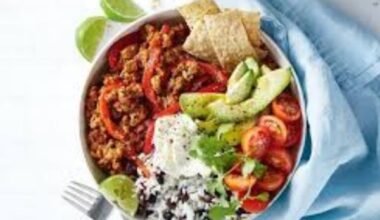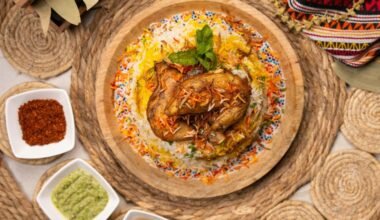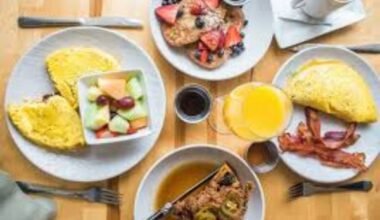Starting your day with the Best Whole Foods Plant Based Diet Breakfast can set the tone for sustained energy, better digestion, and optimal nutrition. A WFPB diet focuses on minimally processed foods, emphasizing fruits, vegetables, whole grains, legumes, nuts, and seeds while avoiding refined sugars, oils, and artificial additives. By choosing nutrient-dense meals in the morning, you fuel your body with fiber, antioxidants, and essential vitamins that support long-term health.
Many people assume that the Whole Foods Plant Based Diet Breakfast are limited to smoothies or oatmeal, but there’s a vast array of delicious and satisfying options. From savory tofu scrambles to creamy chia puddings, Whole Foods Plant Based Diet Breakfast can be both versatile and flavorful. Whether you’re new to plant-based eating or looking for fresh inspiration, these Best Whole Foods Plant Based Diet Breakfast Recipes will help you enjoy a wholesome start to your day.
Beyond just being healthy, a plant-based breakfast can also be quick and convenient. With some simple meal prep, you can have nourishing meals ready in minutes. This article explores easy, nutrient-packed breakfast ideas that align with Whole Foods Plant Based Diet Breakfast lifestyle, ensuring you never run out of tasty and energizing options.
Key Principles of Whole Foods Plant Based Diet Breakfast Recipes
1. Prioritize Whole, Unprocessed Ingredients
Why? Whole foods retain their natural fiber, antioxidants, and phytonutrients, which are often lost in processed versions.
How to Apply:
-
Choose intact grains like steel-cut oats, quinoa, or millet instead of refined cereals or instant oats.
-
Opt for whole fruits (e.g., berries, apples, bananas) over juices or sweetened dried fruits to maximize fiber and minimize sugar spikes.
-
Use natural fats like avocado, nuts, and seeds instead of processed oils or margarine.
Example: A bowl of steel-cut oats with flaxseeds, walnuts, and fresh blueberries is far more nutritious than a packet of flavored instant oatmeal with added sugar.
2. Balance Macronutrients: Fiber, Protein & Healthy Fats
Why? A combination of these keeps you full, stabilizes blood sugar, and provides sustained energy.
How to Achieve Balance:
-
Fiber: Comes from whole grains, fruits, vegetables, and legumes (e.g., oats, sweet potatoes, chickpeas).
-
Plant-Based Protein: Include foods like tofu, tempeh, lentils, chia seeds, hemp seeds, or nut butter.
-
Healthy Fats: Avocado, almonds, ground flaxseeds, and walnuts provide omega-3s and satiety.
Example: A breakfast burrito with whole-grain tortillas, scrambled tofu, black beans, avocado, and sautéed spinach covers all three macronutrients.
3. Minimize (or Eliminate) Refined Sugars & Processed Oils
Why? Refined sugars cause blood sugar crashes, while processed oils (like canola or soybean oil) promote inflammation.
How to Sweeten Naturally:
-
Use mashed bananas, dates, or applesauce in oatmeal or smoothies.
-
Sprinkle cinnamon or vanilla extract for flavor without sugar.
Healthy Fat Alternatives:
-
Instead of butter or margarine, use tahini, almond butter, or coconut yogurt.
Example: A chia pudding sweetened with dates and almond milk is a great alternative to sugary yogurt parfaits.
4. Emphasize Variety & Rotate Ingredients
Why? Different plants provide different nutrients—variety prevents deficiencies and keeps meals exciting.
How to Incorporate Variety:
-
Grains: Alternate between oats, quinoa, buckwheat, and millet.
-
Proteins: Switch between lentils, chickpeas, tempeh, and hemp seeds.
-
Fruits & Veggies: Eat seasonally—berries in summer, squash in winter, leafy greens year-round.
Example:
-
Monday: Green smoothie (spinach, banana, flaxseeds, almond butter).
-
Tuesday: Savory oatmeal with turmeric, chickpeas, and tahini.
-
Wednesday: Sweet potato toast with avocado and pumpkin seeds.
-
Thursday: Tofu scramble with kale and whole-grain toast.
5. Boost Flavor with Spices & Herbs (Not Salt or Sugar)
Why? Spices add antioxidants and depth without excess sodium or sweeteners.
Great Additions:
-
Turmeric (anti-inflammatory) in tofu scrambles.
-
Cinnamon (blood sugar-stabilizing) in oatmeal.
-
Fresh herbs like cilantro or basil in savory dishes.
Example: A breakfast bowl of quinoa with cinnamon, walnuts, and diced apples tastes naturally sweet and satisfying.
6. Prep Ahead for Busy Mornings
Why? Whole Foods Plant Based Diet Breakfast is easier when you have ready-to-go options.
Meal Prep Ideas:
-
Overnight oats or chia pudding.
-
Batch-cooked quinoa or sweet potatoes.
-
Pre-cut veggies for quick scrambles or smoothies.
Example: Prepare a big batch of steel-cut oats on Sunday and reheat portions throughout the week with different toppings (nuts, seeds, fruit).
Whole Food Plant-Based Breakfast Ideas
Grains & Cereals
-
Oatmeal with fruit, flaxseed, nuts, or nut butter
-
Quinoa porridge with almond milk and cinnamon
-
Whole grain toast with avocado, hummus, or nut butter
Smoothies & Bowls
-
Green smoothie with spinach, banana, almond milk, and chia
-
Berry smoothie bowl topped with granola and pumpkin seeds
-
Acai bowl with coconut flakes and fresh fruit
Savory Options
-
Tofu scramble with veggies and turmeric (like scrambled eggs)
-
Avocado toast with cherry tomatoes and hemp seeds
-
Chickpea flour omelet (also called a “vegan omelet”)
Quick & Simple
-
Fruit salad with walnuts or almonds
-
Vegan yogurt (made from soy, almond, or coconut) with granola
-
Chia pudding with plant milk and berries
Easy & Nutritious Whole Foods Plant Based Diet Breakfast Recipes
Smoothie Bowls
Smoothie bowls are a vibrant, nutrient-packed way to start the day. They’re customizable, easy to make, and loaded with vitamins.
-
Tropical Green Smoothie Bowl

Blend spinach, frozen mango, banana, and almond milk until creamy. Top with chia seeds, coconut flakes, and sliced kiwi for extra texture and nutrients. This bowl is rich in vitamin C, fiber, and antioxidants, making it a refreshing and energizing choice. -
Berry Protein Smoothie Bowl
Combine mixed berries, plant-based yogurt, flaxseeds, and a splash of oat milk. Top with granola and almond butter for added crunch and protein. The antioxidants from berries and omega-3s from flaxseeds support brain health and digestion.
Warm & Hearty Options
For those who prefer a warm, comforting breakfast, these options deliver both nutrition and satisfaction.
-
Oatmeal with Nut Butter & Fresh Fruit

Cook steel-cut oats with water or plant milk, then swirl in almond butter and top with banana slices, cinnamon, and a drizzle of maple syrup. Oats provide soluble fiber for gut health, while nut butter adds healthy fats and protein. -
Sweet Potato Toast with Avocado & Seeds
Slice sweet potatoes lengthwise, toast until tender, then top with mashed avocado, pumpkin seeds, and a sprinkle of sea salt. This savory-sweet combo offers complex carbs, potassium, and heart-healthy fats.
Quick & Portable Breakfasts
When you’re short on time, these grab-and-go options keep you nourished without the hassle.
-
Chia Pudding with Mixed Berries

Mix chia seeds with almond milk and a touch of maple syrup, then refrigerate overnight. In the morning, top with fresh berries and crushed walnuts. Chia seeds are packed with omega-3s, protein, and fiber, making this pudding a powerhouse breakfast. -
Whole Grain Toast with Hummus & Veggies
Spread hummus on sprouted grain toast and layer with cucumber, sprouts, and a dash of lemon juice. This savory option provides plant-based protein, fiber, and crunch for a satisfying meal.
Savory Plant-Based Breakfasts
If you prefer savory flavors in the morning, these recipes are packed with protein and bold tastes.
-
Tofu Scramble with Veggies

Sauté crumbled tofu with turmeric, black salt (for an egg flavor), bell peppers, and spinach. Serve with whole-grain toast for a high-protein, iron-rich breakfast that rivals traditional scrambled eggs.
Quinoa Breakfast Bowl with Greens & Tahini
Combine cooked quinoa with sautéed kale, avocado, and a drizzle of tahini dressing. Quinoa is a complete protein, and the tahini adds healthy fats for a balanced, savory meal.
Meal Prep Tips for Busy Mornings
Prepping breakfast ahead of time ensures you stick to healthy choices even on hectic days.
-
Batch cook grains like oats, quinoa, or buckwheat to use throughout the week.
-
Pre-cut fruits and veggies for smoothie bowls or quick scrambles.
-
Soak chia seeds or overnight oats in jars for a ready-to-eat breakfast.
-
Portion out smoothie ingredients in freezer bags for a quick blend-and-go option.
With a little planning, you can enjoy nutritious Whole Foods Plant Based Diet Breakfast Recipes without the morning rush.
Conclusion
Whole Foods Plant Based Diet Breakfast doesn’t have to be boring or time-consuming. With the right ingredients and a bit of creativity, you can enjoy meals that are both delicious and deeply nourishing. From creamy smoothie bowls to hearty tofu scrambles, these recipes prove that plant-based eating is anything but restrictive.
By incorporating these meals into your routine, you’ll notice improved energy levels, better digestion, and a greater intake of essential nutrients. The key is to experiment with flavors and textures to find what works best for your taste preferences and lifestyle.
Ready to give it a try? Pick one recipe to start with and see how Whole Foods Plant Based Diet Breakfast Recipes can transform your mornings. Your body and your taste buds will thank you
FAQs
1. Can I get enough protein from a plant-based breakfast?
Absolutely! Foods like tofu, chia seeds, quinoa, nuts, and legumes provide ample protein. A tofu scramble or chia pudding can easily rival the protein content of eggs or yogurt.
2. Are these breakfasts suitable for weight loss?
Yes! Whole plant foods are naturally lower in calories and higher in fiber, which promotes satiety. Options like oatmeal, chia pudding, and veggie-loaded scrambles help manage hunger and support weight management.
3. How can I make these recipes kid-friendly?
Smoothie bowls with fun toppings (like granola and banana slices) or sweet potato toast cut into shapes can make Best 4 Whole Foods Plant Based Diet Breakfast Recipes meals more appealing to kids. Letting them customize their bowls also increases engagement.
4. Can I meal prep these recipes for the whole week?
Definitely! Overnight oats, chia pudding, and cooked grains store well for 3-4 days. For fresher options like smoothie bowls, pre-portion ingredients and blend when ready.
5. What if I don’t have time to cook in the morning?
Opt for overnight recipes (chia pudding, oats) or quick blends (smoothies). Prepping ingredients the night before cuts down on morning prep time.






